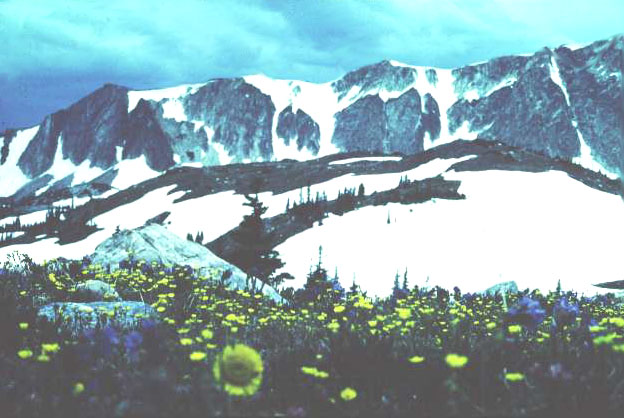
|
|
|
Multiple Stress Factors in Alpine Plants
We are currently funded by the Ecology and Evolutionary Physiology program of the NSF to study the interaction of low temperature and exceptionally high sunlight levels on the photosynthesis of alpine species, with particular emphasis on species growing within the alpine/timberline ecotone. The common occurrence of freezing leaf temperatures just before sunrise on very clear nights (and a thin atmosphere) results in the potential for strong impacts on photosynthetic capabilities throughout the summer growth season at high elevations. This is commonly referred to as low-temperature photoinhibition of photosynthesis and can be chronic or irreversible depending on the severity of these two environmental factors and the species involved. We have found distinct differences between conifer seedlings, herbaceous species, and a few cushion plant and evergreen shrub species. We are also evaluating the potential impact of global warming, e.g. changes in nighttime frost and daytime cloudcover patterns. Most of this work is in collaboration with a former student, Dr. Matt Germino, Idaho State University. We are also collaborating with colleagues at the Botanical Institute of the Republic of Georgia on treeline research in the Caucasus Mountains. (Dan Johnson) |